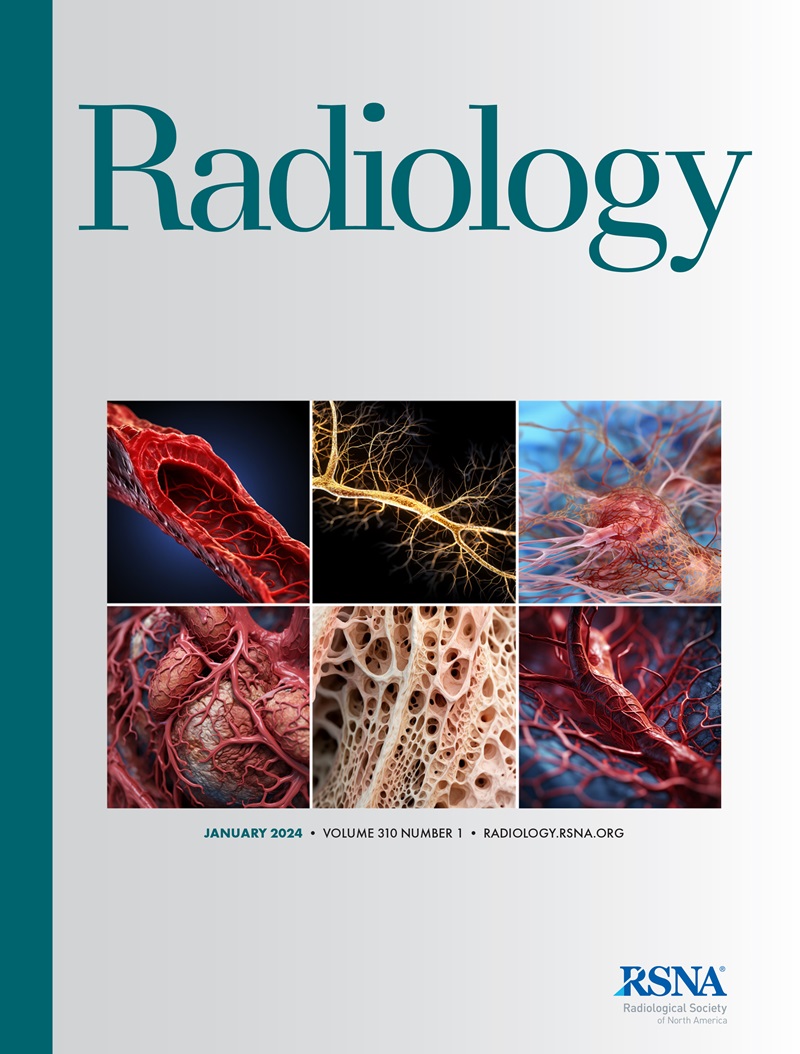求助PDF
{"title":"在基于文字和图像的 ACR 放射诊断学内训考试问题上,GPT-4 与视觉的表现。","authors":"Nolan Hayden, Spencer Gilbert, Laila M Poisson, Brent Griffith, Chad Klochko","doi":"10.1148/radiol.240153","DOIUrl":null,"url":null,"abstract":"<p><p>Background Recent advancements, including image processing capabilities, present new potential applications of large language models such as ChatGPT (OpenAI), a generative pretrained transformer, in radiology. However, baseline performance of ChatGPT in radiology-related tasks is understudied. Purpose To evaluate the performance of GPT-4 with vision (GPT-4V) on radiology in-training examination questions, including those with images, to gauge the model's baseline knowledge in radiology. Materials and Methods In this prospective study, conducted between September 2023 and March 2024, the September 2023 release of GPT-4V was assessed using 386 retired questions (189 image-based and 197 text-only questions) from the American College of Radiology Diagnostic Radiology In-Training Examinations. Nine question pairs were identified as duplicates; only the first instance of each duplicate was considered in ChatGPT's assessment. A subanalysis assessed the impact of different zero-shot prompts on performance. Statistical analysis included χ<sup>2</sup> tests of independence to ascertain whether the performance of GPT-4V varied between question types or subspecialty. The McNemar test was used to evaluate performance differences between the prompts, with Benjamin-Hochberg adjustment of the <i>P</i> values conducted to control the false discovery rate (FDR). A <i>P</i> value threshold of less than.05 denoted statistical significance. Results GPT-4V correctly answered 246 (65.3%) of the 377 unique questions, with significantly higher accuracy on text-only questions (81.5%, 159 of 195) than on image-based questions (47.8%, 87 of 182) (χ<sup>2</sup> test, <i>P</i> < .001). Subanalysis revealed differences between prompts on text-based questions, where chain-of-thought prompting outperformed long instruction by 6.1% (McNemar, <i>P</i> = .02; FDR = 0.063), basic prompting by 6.8% (<i>P</i> = .009, FDR = 0.044), and the original prompting style by 8.9% (<i>P</i> = .001, FDR = 0.014). No differences were observed between prompts on image-based questions with <i>P</i> values of .27 to >.99. Conclusion While GPT-4V demonstrated a level of competence in text-based questions, it showed deficits interpreting radiologic images. © RSNA, 2024 See also the editorial by Deng in this issue.</p>","PeriodicalId":20896,"journal":{"name":"Radiology","volume":null,"pages":null},"PeriodicalIF":12.1000,"publicationDate":"2024-09-01","publicationTypes":"Journal Article","fieldsOfStudy":null,"isOpenAccess":false,"openAccessPdf":"","citationCount":"0","resultStr":"{\"title\":\"Performance of GPT-4 with Vision on Text- and Image-based ACR Diagnostic Radiology In-Training Examination Questions.\",\"authors\":\"Nolan Hayden, Spencer Gilbert, Laila M Poisson, Brent Griffith, Chad Klochko\",\"doi\":\"10.1148/radiol.240153\",\"DOIUrl\":null,\"url\":null,\"abstract\":\"<p><p>Background Recent advancements, including image processing capabilities, present new potential applications of large language models such as ChatGPT (OpenAI), a generative pretrained transformer, in radiology. However, baseline performance of ChatGPT in radiology-related tasks is understudied. Purpose To evaluate the performance of GPT-4 with vision (GPT-4V) on radiology in-training examination questions, including those with images, to gauge the model's baseline knowledge in radiology. Materials and Methods In this prospective study, conducted between September 2023 and March 2024, the September 2023 release of GPT-4V was assessed using 386 retired questions (189 image-based and 197 text-only questions) from the American College of Radiology Diagnostic Radiology In-Training Examinations. Nine question pairs were identified as duplicates; only the first instance of each duplicate was considered in ChatGPT's assessment. A subanalysis assessed the impact of different zero-shot prompts on performance. Statistical analysis included χ<sup>2</sup> tests of independence to ascertain whether the performance of GPT-4V varied between question types or subspecialty. The McNemar test was used to evaluate performance differences between the prompts, with Benjamin-Hochberg adjustment of the <i>P</i> values conducted to control the false discovery rate (FDR). A <i>P</i> value threshold of less than.05 denoted statistical significance. Results GPT-4V correctly answered 246 (65.3%) of the 377 unique questions, with significantly higher accuracy on text-only questions (81.5%, 159 of 195) than on image-based questions (47.8%, 87 of 182) (χ<sup>2</sup> test, <i>P</i> < .001). Subanalysis revealed differences between prompts on text-based questions, where chain-of-thought prompting outperformed long instruction by 6.1% (McNemar, <i>P</i> = .02; FDR = 0.063), basic prompting by 6.8% (<i>P</i> = .009, FDR = 0.044), and the original prompting style by 8.9% (<i>P</i> = .001, FDR = 0.014). No differences were observed between prompts on image-based questions with <i>P</i> values of .27 to >.99. Conclusion While GPT-4V demonstrated a level of competence in text-based questions, it showed deficits interpreting radiologic images. © RSNA, 2024 See also the editorial by Deng in this issue.</p>\",\"PeriodicalId\":20896,\"journal\":{\"name\":\"Radiology\",\"volume\":null,\"pages\":null},\"PeriodicalIF\":12.1000,\"publicationDate\":\"2024-09-01\",\"publicationTypes\":\"Journal Article\",\"fieldsOfStudy\":null,\"isOpenAccess\":false,\"openAccessPdf\":\"\",\"citationCount\":\"0\",\"resultStr\":null,\"platform\":\"Semanticscholar\",\"paperid\":null,\"PeriodicalName\":\"Radiology\",\"FirstCategoryId\":\"3\",\"ListUrlMain\":\"https://doi.org/10.1148/radiol.240153\",\"RegionNum\":1,\"RegionCategory\":\"医学\",\"ArticlePicture\":[],\"TitleCN\":null,\"AbstractTextCN\":null,\"PMCID\":null,\"EPubDate\":\"\",\"PubModel\":\"\",\"JCR\":\"Q1\",\"JCRName\":\"RADIOLOGY, NUCLEAR MEDICINE & MEDICAL IMAGING\",\"Score\":null,\"Total\":0}","platform":"Semanticscholar","paperid":null,"PeriodicalName":"Radiology","FirstCategoryId":"3","ListUrlMain":"https://doi.org/10.1148/radiol.240153","RegionNum":1,"RegionCategory":"医学","ArticlePicture":[],"TitleCN":null,"AbstractTextCN":null,"PMCID":null,"EPubDate":"","PubModel":"","JCR":"Q1","JCRName":"RADIOLOGY, NUCLEAR MEDICINE & MEDICAL IMAGING","Score":null,"Total":0}
引用次数: 0
引用
批量引用


